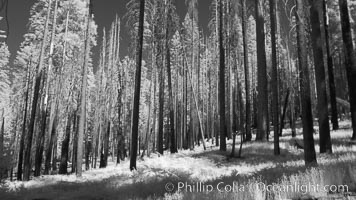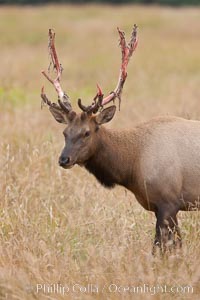
Roosevelt elk, adult bull male with large antlers. This bull elk has recently shed the velvet that covers its antlers. While an antler is growing, it is covered with highly vascular skin called velvet, which supplies oxygen and nutrients to the growing bone; once the antler has achieved its full size, the velvet is lost and the antler's bone dies. This dead bone structure is the mature antler, which is itself shed after each mating season. Roosevelt elk grow to 10' and 1300 lb, eating grasses, sedges and various berries, inhabiting the coastal rainforests of the Pacific Northwest.
Species: Roosevelt elk, Cervus canadensis roosevelti
Location: Redwood National Park, California
Image ID: 25909
Species: Roosevelt elk, Cervus canadensis roosevelti
Location: Redwood National Park, California
Image ID: 25909
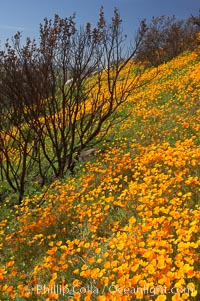
California poppies bloom in enormous fields cleared just a few months earlier by huge wildfires. Burnt dead bushes are seen surrounded by bright poppies.
Species: California poppy, Eschscholtzia californica, Eschscholzia californica
Location: Del Dios, San Diego, California
Image ID: 20498
Species: California poppy, Eschscholtzia californica, Eschscholzia californica
Location: Del Dios, San Diego, California
Image ID: 20498
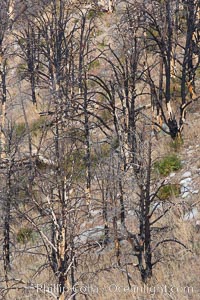
Dead trees killed by fire on the sides of Rock Creek Canyon.
Location: Rock Creek Canyon, Sierra Nevada Mountains, California
Image ID: 23350
Location: Rock Creek Canyon, Sierra Nevada Mountains, California
Image ID: 23350
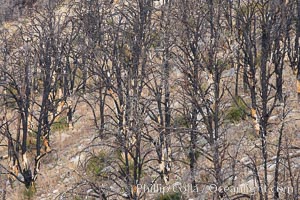
Dead trees killed by fire on the sides of Rock Creek Canyon.
Location: Rock Creek Canyon, Sierra Nevada Mountains, California
Image ID: 23380
Location: Rock Creek Canyon, Sierra Nevada Mountains, California
Image ID: 23380
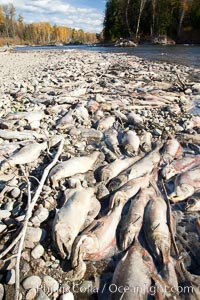
Carcasses of dead sockeye salmon, line the edge of the Adams River. These salmon have already completed their spawning and have died, while other salmon are still swimming upstream and have yet to lay their eggs.
Species: Sockeye salmon, Oncorhynchus nerka
Location: Adams River, Roderick Haig-Brown Provincial Park, British Columbia, Canada
Image ID: 26183
Species: Sockeye salmon, Oncorhynchus nerka
Location: Adams River, Roderick Haig-Brown Provincial Park, British Columbia, Canada
Image ID: 26183
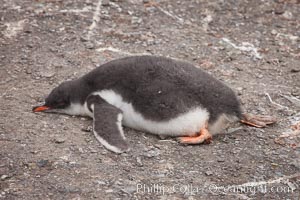
Gentoo penguin, chick, appears dead but is really just sleeping.
Species: Gentoo penguin, Pygoscelis papua
Location: Livingston Island, Antarctic Peninsula, Antarctica
Image ID: 25936
Species: Gentoo penguin, Pygoscelis papua
Location: Livingston Island, Antarctic Peninsula, Antarctica
Image ID: 25936
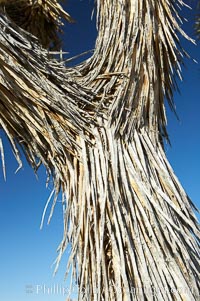
The trunk of this Joshua tree is covered by its still-attached dead leaves, which will eventually fall off to expose the wrinkly bark.
Species: Joshua tree, Yucca brevifolia
Location: Joshua Tree National Park, California
Image ID: 11991
Species: Joshua tree, Yucca brevifolia
Location: Joshua Tree National Park, California
Image ID: 11991
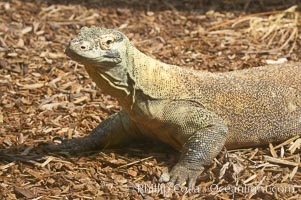
Komodo dragon, the worlds largest lizard, grows to 10 feet (3m) and over 500 pounds. They have an acute sense of smell and are notorious meat-eaters. The saliva of the Komodo dragon is deadly, an adaptation to help it more quickly consume its prey.
Species: Komodo dragon, Varanus komodoensis
Image ID: 12820
Species: Komodo dragon, Varanus komodoensis
Image ID: 12820
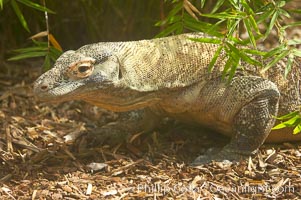
Komodo dragon, the worlds largest lizard, grows to 10 feet (3m) and over 500 pounds. They have an acute sense of smell and are notorious meat-eaters. The saliva of the Komodo dragon is deadly, an adaptation to help it more quickly consume its prey.
Species: Komodo dragon, Varanus komodoensis
Image ID: 12821
Species: Komodo dragon, Varanus komodoensis
Image ID: 12821
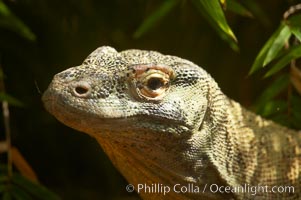
Komodo dragon, the worlds largest lizard, grows to 10 feet (3m) and over 500 pounds. They have an acute sense of smell and are notorious meat-eaters. The saliva of the Komodo dragon is deadly, an adaptation to help it more quickly consume its prey.
Species: Komodo dragon, Varanus komodoensis
Image ID: 12822
Species: Komodo dragon, Varanus komodoensis
Image ID: 12822
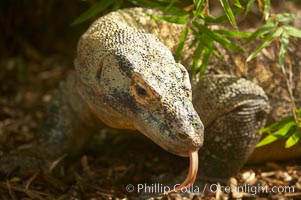
Komodo dragon, the worlds largest lizard, grows to 10 feet (3m) and over 500 pounds. They have an acute sense of smell and are notorious meat-eaters. The saliva of the Komodo dragon is deadly, an adaptation to help it more quickly consume its prey.
Species: Komodo dragon, Varanus komodoensis
Image ID: 12823
Species: Komodo dragon, Varanus komodoensis
Image ID: 12823
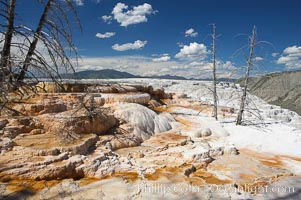
Travertine terraces below Canary Spring with dead trees permanently entombed in the hardened terraces.
Location: Mammoth Hot Springs, Yellowstone National Park, Wyoming
Image ID: 13618
Location: Mammoth Hot Springs, Yellowstone National Park, Wyoming
Image ID: 13618
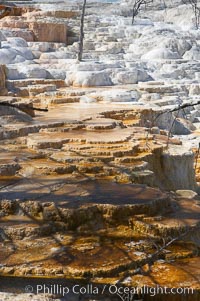
Travertine terraces below Canary Spring with dead trees permanently entombed in the hardened terraces.
Location: Mammoth Hot Springs, Yellowstone National Park, Wyoming
Image ID: 13620
Location: Mammoth Hot Springs, Yellowstone National Park, Wyoming
Image ID: 13620
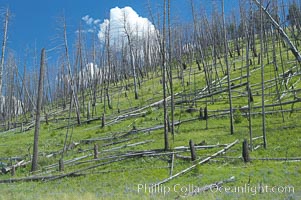
Yellowstones historic 1988 fires destroyed vast expanses of forest. Here scorched, dead stands of lodgepole pine stand testament to these fires, and to the renewal of these forests. Seedling and small lodgepole pines can be seen emerging between the dead trees, growing quickly on the nutrients left behind the fires. Southern Yellowstone National Park.
Location: Yellowstone National Park, Wyoming
Image ID: 13636
Location: Yellowstone National Park, Wyoming
Image ID: 13636
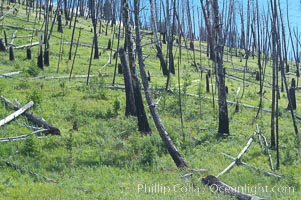
Yellowstones historic 1988 fires destroyed vast expanses of forest. Here scorched, dead stands of lodgepole pine stand testament to these fires, and to the renewal of these forests. Seedling and small lodgepole pines can be seen emerging between the dead trees, growing quickly on the nutrients left behind the fires. Southern Yellowstone National Park.
Location: Yellowstone National Park, Wyoming
Image ID: 13637
Location: Yellowstone National Park, Wyoming
Image ID: 13637
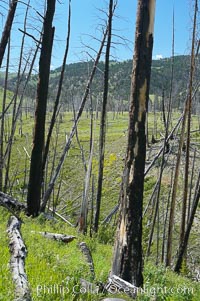
Yellowstones historic 1988 fires destroyed vast expanses of forest. Here scorched, dead stands of lodgepole pine stand testament to these fires, and to the renewal of these forests. Seedling and small lodgepole pines can be seen emerging between the dead trees, growing quickly on the nutrients left behind the fires. Southern Yellowstone National Park.
Location: Yellowstone National Park, Wyoming
Image ID: 13638
Location: Yellowstone National Park, Wyoming
Image ID: 13638
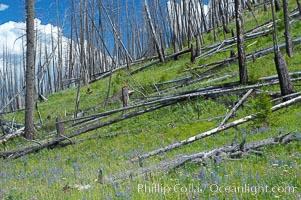
Yellowstones historic 1988 fires destroyed vast expanses of forest. Here scorched, dead stands of lodgepole pine stand testament to these fires, and to the renewal of these forests. Seedling and small lodgepole pines can be seen emerging between the dead trees, growing quickly on the nutrients left behind the fires. Southern Yellowstone National Park.
Location: Yellowstone National Park, Wyoming
Image ID: 13639
Location: Yellowstone National Park, Wyoming
Image ID: 13639
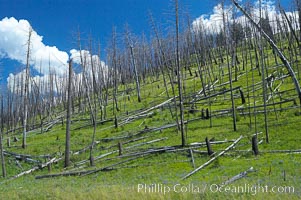
Yellowstones historic 1988 fires destroyed vast expanses of forest. Here scorched, dead stands of lodgepole pine stand testament to these fires, and to the renewal of these forests. Seedling and small lodgepole pines can be seen emerging between the dead trees, growing quickly on the nutrients left behind the fires. Southern Yellowstone National Park.
Location: Yellowstone National Park, Wyoming
Image ID: 13640
Location: Yellowstone National Park, Wyoming
Image ID: 13640
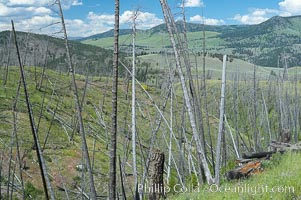
Yellowstones historic 1988 fires destroyed vast expanses of forest. Here scorched, dead stands of lodgepole pine stand testament to these fires, and to the renewal of these forests. Seedling and small lodgepole pines can be seen emerging between the dead trees, growing quickly on the nutrients left behind the fires. Southern Yellowstone National Park.
Location: Yellowstone National Park, Wyoming
Image ID: 13641
Location: Yellowstone National Park, Wyoming
Image ID: 13641
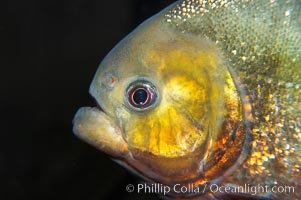
Red piranha, a fierce predatory freshwater fish native to South American rivers. Its reputation for deadly attacks is legend.
Species: Red piranha, Pygocentrus nattereri
Image ID: 14701
Species: Red piranha, Pygocentrus nattereri
Image ID: 14701
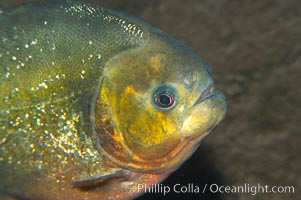
Red piranha, a fierce predatory freshwater fish native to South American rivers. Its reputation for deadly attacks is legend.
Species: Red piranha, Pygocentrus nattereri
Image ID: 14702
Species: Red piranha, Pygocentrus nattereri
Image ID: 14702
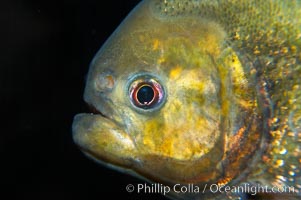
Red piranha, a fierce predatory freshwater fish native to South American rivers. Its reputation for deadly attacks is legend.
Species: Red piranha, Pygocentrus nattereri
Image ID: 14703
Species: Red piranha, Pygocentrus nattereri
Image ID: 14703
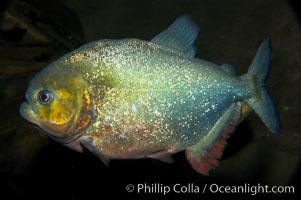
Red piranha, a fierce predatory freshwater fish native to South American rivers. Its reputation for deadly attacks is legend.
Species: Red piranha, Pygocentrus nattereri
Image ID: 14704
Species: Red piranha, Pygocentrus nattereri
Image ID: 14704
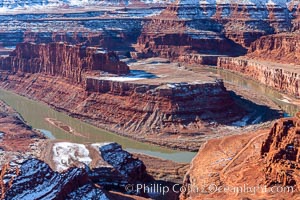
Dead Horse Point Overlook, with the Colorado River flowing 2,000 feet below. 300 million years of erosion has carved the expansive canyons, cliffs and walls below and surrounding Deadhorse Point.
Location: Deadhorse Point State Park, Utah
Image ID: 18091
Location: Deadhorse Point State Park, Utah
Image ID: 18091
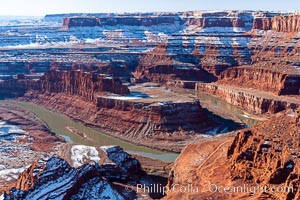
Dead Horse Point Overlook, with the Colorado River flowing 2,000 feet below. 300 million years of erosion has carved the expansive canyons, cliffs and walls below and surrounding Deadhorse Point.
Location: Deadhorse Point State Park, Utah
Image ID: 18092
Location: Deadhorse Point State Park, Utah
Image ID: 18092
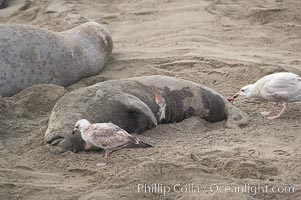
An elephant seal pup carcass is picked over by seagulls. The pup was perhaps abandoned by, or became separated from, its mother, or else succumbed to disease or injury from much larger males during their territorial battles on the beach.
Species: Elephant seal, Mirounga angustirostris
Location: Piedras Blancas, San Simeon, California
Image ID: 20391
Species: Elephant seal, Mirounga angustirostris
Location: Piedras Blancas, San Simeon, California
Image ID: 20391
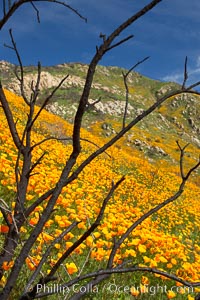
California poppies bloom in enormous fields cleared just a few months earlier by huge wildfires. Burnt dead bushes are seen surrounded by bright poppies.
Species: California poppy, Eschscholtzia californica, Eschscholzia californica
Location: Del Dios, San Diego, California
Image ID: 20515
Species: California poppy, Eschscholtzia californica, Eschscholzia californica
Location: Del Dios, San Diego, California
Image ID: 20515
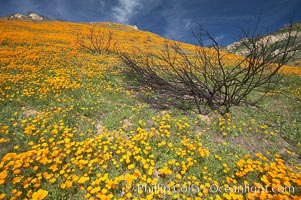
California poppies bloom in enormous fields cleared just a few months earlier by huge wildfires. Burnt dead bushes are seen surrounded by bright poppies.
Species: California poppy, Eschscholtzia californica, Eschscholzia californica
Location: Del Dios, San Diego, California
Image ID: 20516
Species: California poppy, Eschscholtzia californica, Eschscholzia californica
Location: Del Dios, San Diego, California
Image ID: 20516
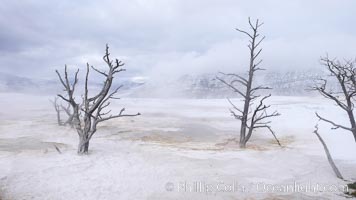
Dead trees embedded in calcium carbonate deposits in the travertine terraces of Mammoth Hot Springs, near Minerva terrace . Over two tons of calcium carbonate (in solution) is deposited each day on the terraces, gradually killing any vegetation that had managed to be growing.
Location: Mammoth Hot Springs, Yellowstone National Park, Wyoming
Image ID: 19795
Location: Mammoth Hot Springs, Yellowstone National Park, Wyoming
Image ID: 19795
